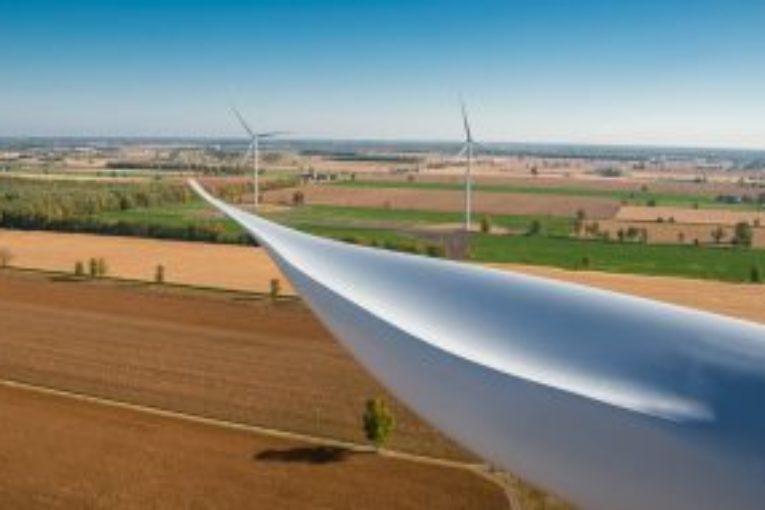
Canada’s wind energy industry can increase its participation in a modernized Ontario electricity market, supplying low-cost, non-emitting energy, as well as a suite of products and services that will help the province meet its electricity demand reliably and efficiently.
That’s the conclusion of a May 4 wind industry response to a request for information from the province’s Independent Electricity System Operator on how non-emitting energy resources can participate in current and future electricity markets. CanWEA’s response discusses how wind energy can supply multiple electricity products in wholesale electricity markets, what market changes are needed to enable the supply of these electricity products, and our recommendations on required enhancements to the Ontario wholesale electricity market beyond what is now contemplated under the IESO’s Market Renewal Program.
Our most obvious capabilities are becoming better known by the day: wind energy does not emit any of the gases that cause air pollution or climate change, and it has become the least-costly form of new electricity generation now available. Alberta recently agreed to procure power from four wind generation projects totalling 600 megawatts at an average contract price of 3.7 cents per kilowatt hour. As other forms of energy increase in price, wind energy prices continue to fall.
As the lowest-cost source of new electricity generation for Ontario, wind energy provides a great hedge in case nuclear refurbishments falter, or customer demand grows faster than expected. Wind energy can be put in place quickly to ensure reliability while helping the province meet its climate change commitments.
Not as well known, however, is wind energy’s potential contribution in providing a portfolio of products and services necessary for making the electricity system cost effective, reliable, flexible and efficient. For example, wind can provide reliable capacity by pairing with storage, demand response, and/or other non-emitting energies such as solar and hydro. It can also offer the electricity system environmental attributes such as tradable Renewable Energy Certificates that guarantee that a supply of energy has been generated from a non-emitting energy source. And wind energy can provide a broad range of ancillary services to the electricity grid, often more nimbly and more cost effectively than conventional sources, supporting the continuous flow of electricity so that supply will continually meet demand. These services include: operating reserve, regulation, reactive support, and voltage control.
Wind energy can also provide a number of other ancillary services not currently defined within the IESO market rules for wind. Examples include primary frequency response, which helps ensure that the grid frequency stays within a specific range of the nominal frequency; load following, where wind turbines can adjust their power output as electricity demand fluctuates; and inertia and fast frequency response, which can provide a temporary power boost when countering a frequency drop by transforming the rotational inertia through the power electronics of a wind turbine.
Wholesale market design changes are required to enable wind energy operators to effectively offer a full suite of ancillary services beyond the provision of the lowest cost energy available today. Such changes need to be coupled with changes to IESO scheduling and dispatch tools and the IESO network model.
Implementing such changes will allow wind energy to provide, and be compensated for, the full range of services it can provide to support the grid. In doing so, however, the IESO must also ensure that wind energy generators will be provided with the revenue adequacy and certainty required to enable wind energy projects to be financed, constructed and optimally operated.
So, what are the next steps to allow the IESO to maximize efficiencies by enabling full participation by wind energy in emerging ancillary service markets while ensuring revenue adequacy for generators?
First, the IESO’s Non-Emitting Resource Sub-Committee must model the capabilities of non-emitting technologies such as wind generators to supply and integrate a broad range of electricity products, some of which we have discussed above. This should lead to recommendations on how to change the market design and market rules to reduce barriers to participation, and on how to ensure that non-emitting resources receive adequate revenues for supplying beneficial electricity products, including those that are not in the scope of the IESO’s current Market Renewal Program.
Not to be forgotten is a focus on how to value environmental attributes within Ontario as a market develops for these. Finally, we must also value the role that contracts can play in the future electricity marketplace – when and where they are clearly beneficial in meeting the system’s needs in areas such as low cost, reliability, emissions and flexibility.
The electricity sector is undergoing transformative change and electricity markets and rules must evolve as a result. Ontario’s market renewal initiative has a unique opportunity to look beyond today’s electricity market challenges and instead focus on designing the electricity market of the future. The wind energy industry is ready for an expanded role in ensuring Ontario’s future electricity grid is clean, affordable, flexible and reliable.
photo by Meera Haque, Siemens Gamesa Renewable Energy
If you found this blog interesting, you may also find these links informative:
Updated LTEP needs wind to achieve its goals
IEA technology report bullish on global wind energy
Ontario Regional Director at the Canadian Wind Energy Association
You can read more of the news on source



